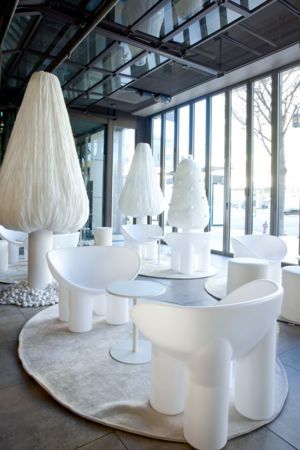![A mountaineer walks on the Glacier de la Selle in the Ecrins Massif in Saint-Christophe-en-Oisans, early in the morning on July 9. (AFP-Yonhap)]](https://contents-cdn.viewus.co.kr/image/2025/07/CP-2023-0309/30694630.jpg) June’s heat wave has accelerated the melting of snow and glaciers in the French Alps, causing water shortages at mountain shelters just as the summer hiking season kicks into high gear.
June’s heat wave has accelerated the melting of snow and glaciers in the French Alps, causing water shortages at mountain shelters just as the summer hiking season kicks into high gear.
“The snowfield that usually supplies water to our 60-bed chalet already looks like it would in late July or early August,” she explained.
The snow is melting nearly a month ahead of schedule. Without a water tank, the refuge relies solely on mountain runoff. If that dries up, they’ll have to shut down – a scenario that played out last August and could repeat this year.
Dagan’s stopgap solution? A kilometer-long plastic pipe, painstakingly installed to tap a nearby glacier near Pic de la Grave.
But the pipe’s path is treacherous – laid across steep, unstable slopes increasingly battered by violent storms.
Over her 15-year career, Dagan has witnessed a dramatic transformation of the mountains and glaciers she calls “our water towers.”
“We’re the canaries in the coal mine,” she said grimly.
Local mountain guide Thomas Boillot admitted, “We never imagined water supply could become an issue for mountain shelters.”
“But these cases are multiplying, and we’ll likely see more,” he added.
The crisis is multifaceted: once-permanent snowfields now vanish in summer, precipitation has dwindled, and melting glaciers are reshaping the landscape – all disrupting the water supply for high-altitude chalets.
“Water used to flow down naturally from snow and ice reserves,” Boillot explained. “In the future, we’ll have to pump it up from below.”
Scientists warn that climate change hits the Alps nearly twice as hard as the global average. By 2100, they predict only fragments of today’s glaciers may remain – if they survive at all.
The situation is equally dire in neighboring Switzerland, where authorities report snow and ice melt is five to six weeks ahead of schedule across the country’s 1,400 glaciers.
Xavier Cailhol, an environmental science Ph.D. student and mountain guide, described the heat wave’s impact on Mont Blanc as “brutal.”
“I started ski touring on Mont Blanc in June with 40 centimeters (over a foot) of powder,” he recounted. “By the end, I was on bare glaciers – even at 3,700 meters (12,139 feet) on the Midi Peak.”
Cailhol emphasized the protective role of snow cover: “It reflects sunlight, shielding the ice beneath.”
“Above 3,200 meters (10,500 feet), it’s drier than we’ve ever seen,” he warned. “It’s deeply concerning for the rest of summer.” The Bossons Glacier, a massive ice sheet above Chamonix, illustrates the accelerating melt.
“It started with a small gravel patch that’s now expanding,” Cailhol explained. “The dark color absorbs more heat, speeding up the melting process.”
From Chamonix, the retreating Bossons Glacier serves as a stark, visible reminder of the widespread changes reshaping glaciers across the globe. (AFP)









Most Commented